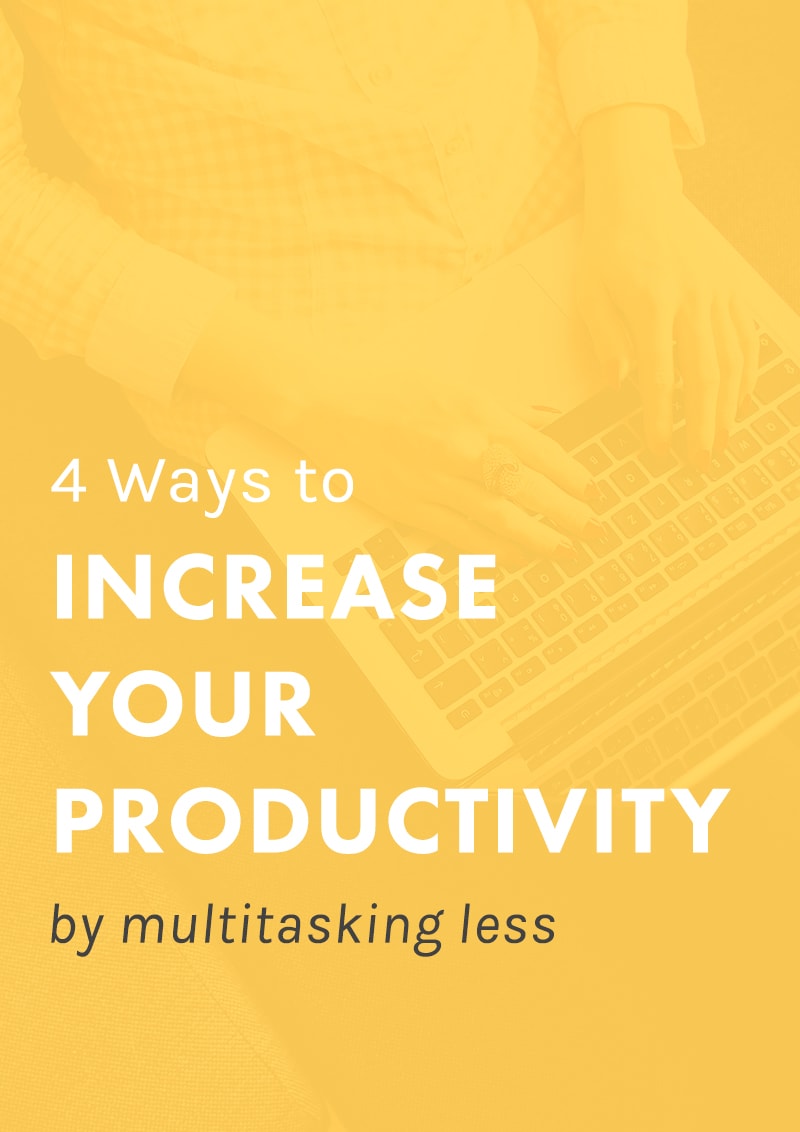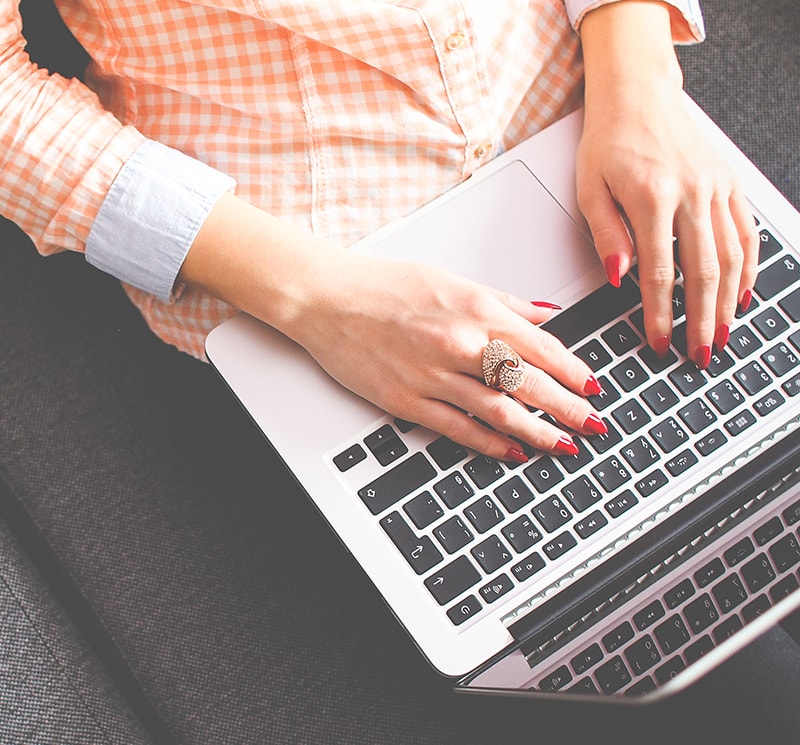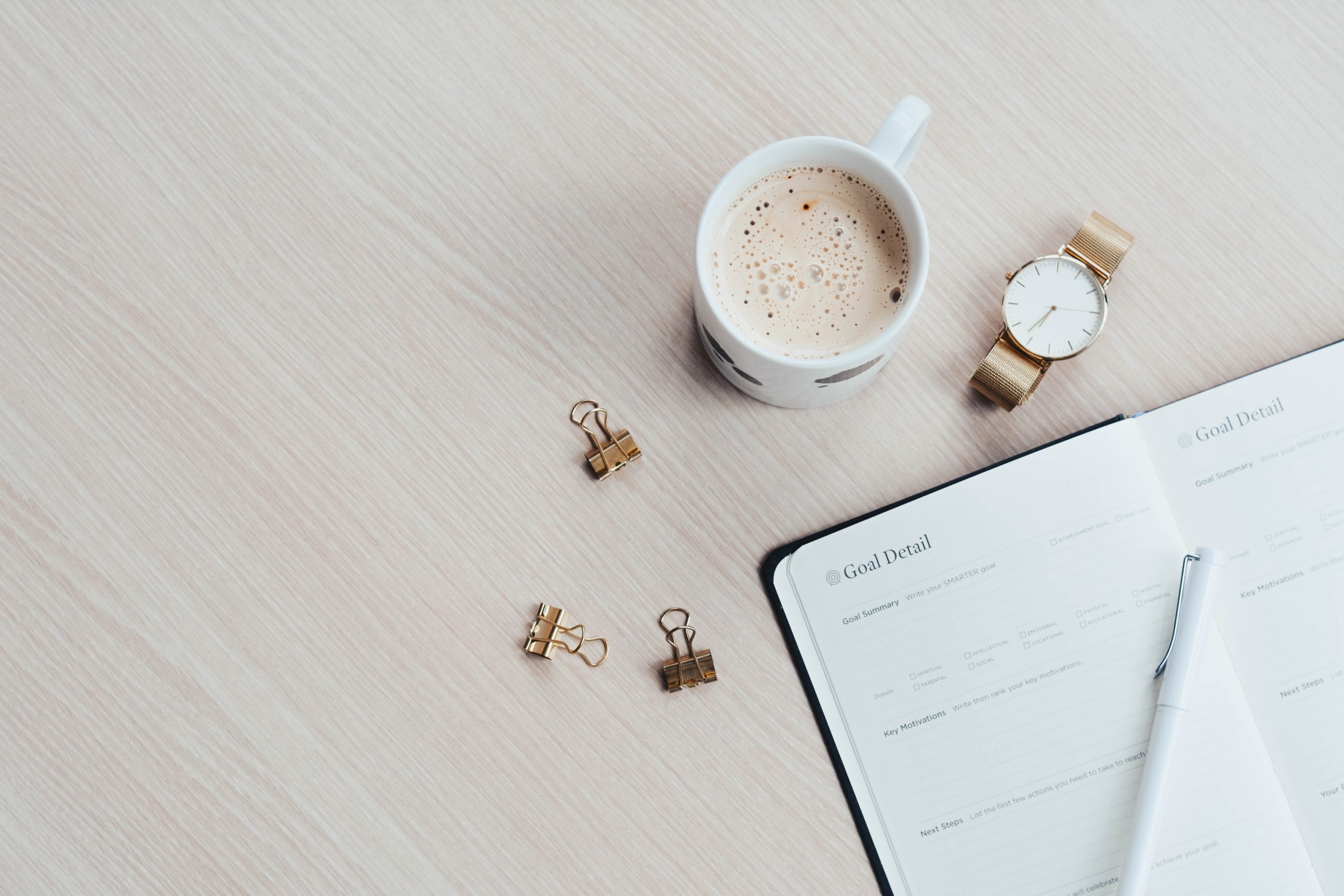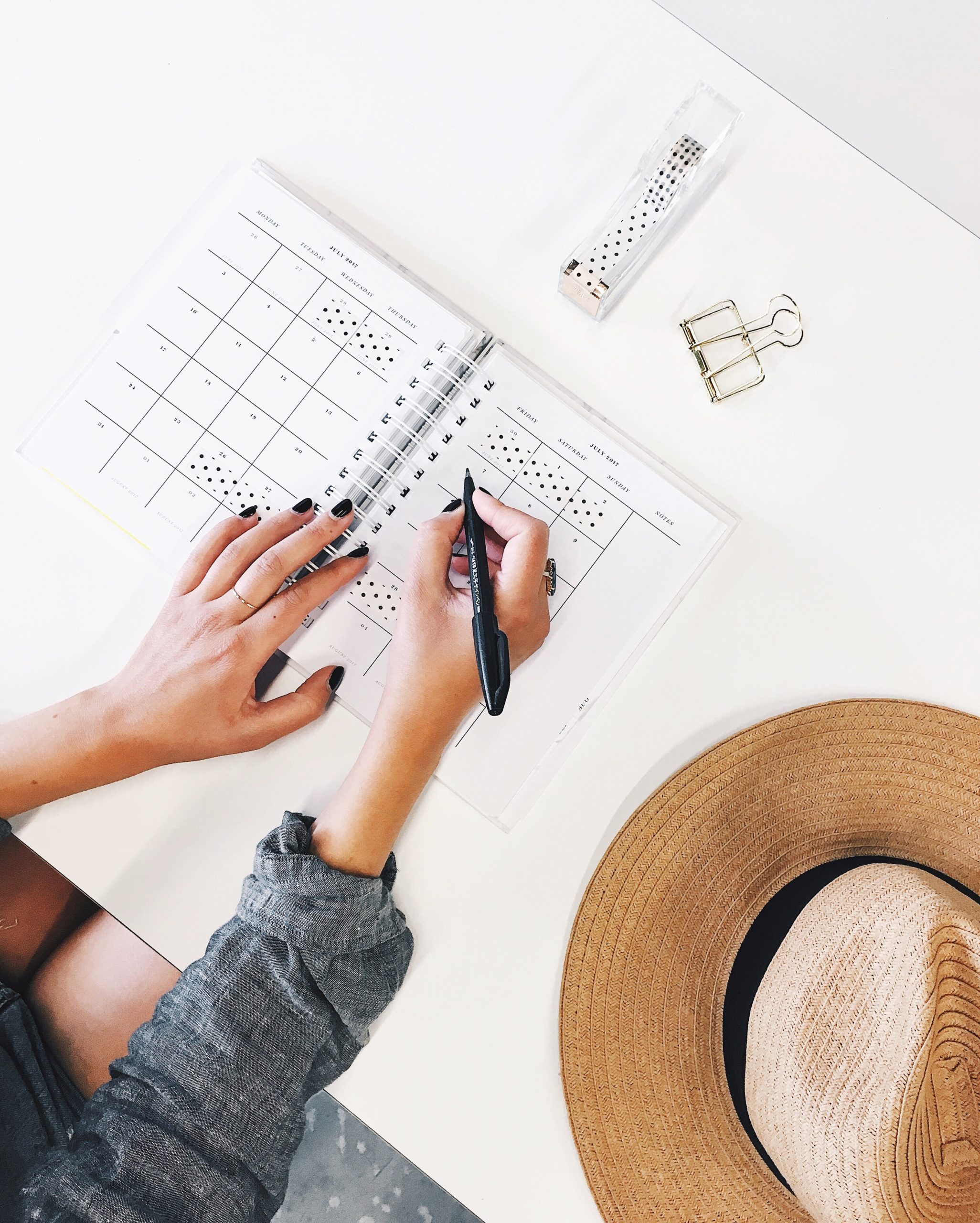
In our workaholic society, we’re taught that multitasking is the secret life-hack to increasing your productivity. If I could pay my credit card bill, finish a project, and upload a new Instagram photo at the same time, why wouldn’t I? At least, that’s what I used to think.
But I started to realize that despite all the multi-tasking I was doing, I wasn’t actually increasing my productivity. I was spreading myself too thin — getting small portions of many tasks done, but never quite finishing any. It was a frustrating process and I ended up feeling over-worked and under-productive.
So, I started to do a little research on multi-tasking and the brain. Ya know, SCIENCE. I found that multitasking is like an optical illusion. The more multi-tasking you’re doing, the more productive you must be, right? Actually, the opposite is true.
Multitasking is just giving your brain distraction after distraction. According to studies, you increase your productivity by 40% (!!) when you give yourself time to focus on one task. Changing focus in the middle of a project not only forces your brain to switch tracks, but when you return to the original project, your brain will need to refocus yet again. Even little things, like quickly checking your email, can be distracting.
So what can you do to change this habit and actually increase your productivity? Here are four essential tips:
Put your phone far, far away
The smartphone is a slippery slope. First you check the time, then see if you’ve missed any work calls and pretty soon you’re scheduling a lunch date, renewing your Spotify subscription and completely ignoring what you were working on in the first place. Okay, maybe you have more will power than I do, but even simply answering a text in the middle of working on a project can leave you distracted and considerably less productive than before.
It may sound silly, but putting your phone on a table across the room or even *gasp* turning it off can reduce the risk of distraction. If you’re in the middle of an important activity, treat your phone as a phone. Answer calls and nothing else.
Related: Why I Turn My Cell Phone Off During the Day (And You Should, Too!)
Notice patterns and set specific times
Now that you’ve been thinking about multitasking, you’ll probably be more aware of your urges to do so. Just noticing your thought patterns is a good, first step. What’s your go-to distracter? Email? Updating your calendar? “Work”-related social media? Whatever it is, avoid the distraction by setting yourself specific times during the day that you can check it.
Tim Ferris of The 4-Hour Workweek suggests checking your email 2-3 times a day, max. That may seem a bit extreme, especially because email is the most common communication for work, but you also don’t need to check your inbox every time you have new email. Give yourself specific times when you’re not working on other tasks so that you can focus on answering your clients and colleagues without being distracted.
Take a productive break
If you feel the urge to switch tasks, it could be that you’re bored or just need a mental break from whatever you’re working on. In order to increase your productivity, take a a little time-out. Avoid the urge to make a call or run a quick errand. Instead, take a walk or meditate for 10 minutes. Taking a real, mental break will give you the relaxation you actually need and leave you with a more productive mindset when you’re ready to get back to work.
Related: How to Get Shit Done Even When You Really Don’t Feel Like It
Set a timer
It can feel daunting (and perhaps boring) to know that you now have to focus on one project and nothing else. To help, set a timer for each of your tasks each day. While the timer is running, allow yourself to only work on one thing, knowing that when you’re finished, you can take a quick break to check social media, or whatever it is you’d normally distract yourself with.
It will also increase your productivity if you create a to-do list at the beginning of your day and set an amount of time next to each item. That way, you know how long to set your timer and can properly plan out your day.












